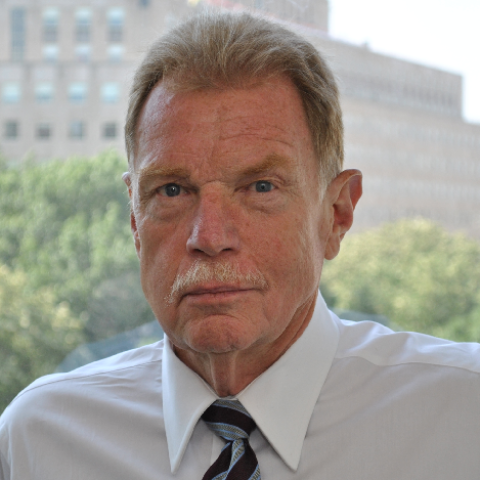President Obama's National Drug Control Strategy in 2010 first proclaimed the major policy goals of the administration's approach to the drug problem and the goals were to be met by 2015. Not only have they not been met, in critical instances, the policies have been going in the wrong direction, rapidly.
We learned last week that, in the midst of the ongoing opiate overdose crisis, heroin overdose deaths rose an additional 28 percent between 2013 and 2014. That's on top of the 340 percent rise in heroin deaths since 2007, such that beyond the 8,217 deaths of 2013, we now have another 10,574. That is, we now see a 440- percent increase from the Bush years.
Moreover, prescription opiate deaths also surged an additional 16 percent, taking us to 18,893 dead, while heroin use and Mexican production of the drug continue their steep climb. Overall, all drug poisoning deaths hit 47,055 in 2014. That's up from the last years of the Bush administration, when they were 36,450; that is, the rise for all drug deaths is almost 30 percent.
But according to the Obama administration, that wasn't going to happen. Instead, it was supposed to drop by 15 percent between 2010 and 2015, a target confidently set in their own strategic goals.
And then this week we discover that marijuana use by high school students, as measured by the largest, longest-running youth survey, Monitoring the Future (MTF), remains steadfastly high, unmoved from the steep rise since 2009; more than 1-in-5 high school seniors are "past-month" users of the drug. (Moreover, the foundation of prevention education, perceived "harmfulness" in using marijuana, has fallen to its lowest point ever among 12th graders, 62 percent lower than in 2008.) The same sustained high rates are found for youth use of "any illicit drug," beyond marijuana.
Further, the lead researcher for MTF had issued a dire warning this year, that the "second relapse phase in America's youth epidemic of drug use may now be beginning," based on recent upturns in marijuana use.
Many experts suspect that the actual number of users is considerably higher, were MTF to properly capture the new, highly potent forms of the drug now spreading across the country, the candies, drinks, and concentrates such as shatter" consumed in vapor-pens, even in the "classroom The potency of such forms is unprecedented, reaching 70 to 80 percent THC (compared to the 3-4 percent potency of the 1980s), the intoxicating chemical linked to such effects as IQ loss, memory and cognitive impairment, psychosis, and multiple social pathologies, including school drop-out.
Again, that wasn't supposed to happen. By the administration's goals, youth past-month" use of drugs was to decline by 15 percent. Similarly for 18-25 year olds, whose rates of "past-month" use were supposed to fall 10 percent; the National Survey on Drug Use and Health "shows that since 2008, their "past-month" use has risen 12 percent (strictly marijuana use by 18 percent).
Drugged driving was to drop; it's up. The "lifetime" use of drugs by 8th graders was supposed to decline by 15 percent (surely a modest goal); MTF shows that in 2015 it's up 8 percent since 2007. And so forth.
These recent findings matter, as they show undeniably that the drug policies of the Obama administration have failed. Importantly, they have failed not according to editorializing critics, but according to the very metrics, required of the White House Office of National Drug Control Policy by law, which the administration itself selected as the way to evaluate their performance. That is, this evidence represents a self-indictment.
For seven long years, the administration has insisted on a master narrative. It denounced the supposed policies of the past, and proclaimed a new, enlightened approach, that "ended the drug war," promised treatment insurance that never arrived, dispensed clean needles and overdose antidotes and other inadequate "harm reduction" approaches, and in an overarching manner blamed "stigma" for the disease of addiction.
Never mind that the actual Bush policies had produced real results—treating drug addiction as a public health problem; insisting, for example, on drug courts over incarceration; and effectively reducing the availability and use of all drugs through a combined medical science, national security, and law enforcement strategy that reduced drug supply as it strengthened prevention and treatment. But the Obama administration insisted on the distorted caricature.
The policies of the Obama administration's predecessors, we heard repeatedly, were the failed crack-downs of the past, trying to reduce the supply of drugs and fighting back against international cartels. All that was declared futile, notwithstanding that under Bush, the same MTF data showed a 25-percent reduction in past-month" marijuana use, for combined high school grades 8<sup>th</sup> through 12<sup>th</sup>, that "cocaine production had fallen 75 percent in Colombia, and cocaine use on U.S. streets had plummeted 50 percent (by 2011).
So far was this administration from achieving their goals that even the Government Accountability Office issued a report warning that they were seriously off track, based largely on data from 2012; but they did not change course, and things have only worsened since then.
Sunday, on CBS's 60 Minutes, Obama Drug Czar Michael Botticelli, apparently trying to distance himself from the impact of Obama's policies, termed legalized marijuana "bad public health policy," and worried that youth receive the message that because the drug is legal, it's somehow safe, eroding the perceptions of risk essential to good prevention programs.
If he believes these things, why doesn't he just tell the president, the source of the policies that have led us into this debacle, when he disabled federal law and enabled commercial, legalized marijuana?
The real contrast between the last seven years and that of previous approaches lies in three things: 1. Failed leadership, turning away from the urgency of protecting Americans from this disease approaching epidemic proportions, and instead undermining federal law; 2. Weakening prevention by failing to defend social norms and allowing the normalization of drug use; and 3. Neglecting drug supply, thereby allowing the tide of drugs to now flood our streets.
The administration boasts that its drug policy is "evidence-based." Well, the evidence is in, and the verdict is: "You're doing it wrong."





















